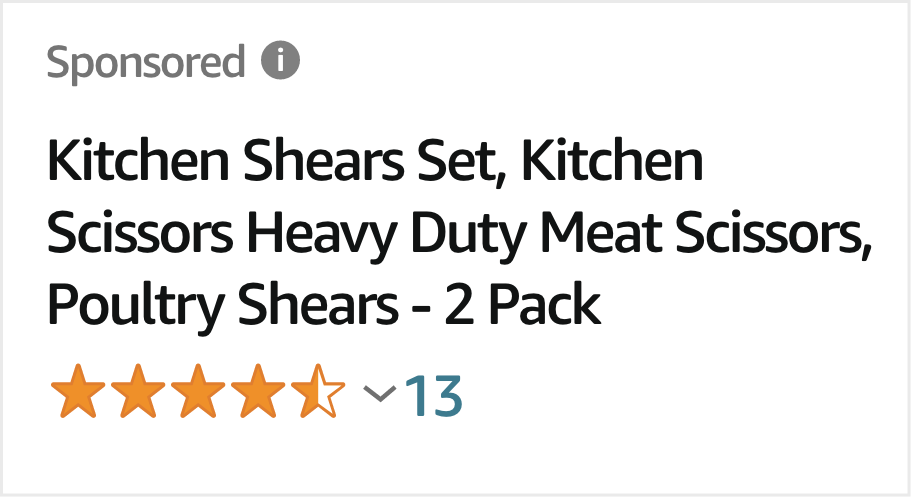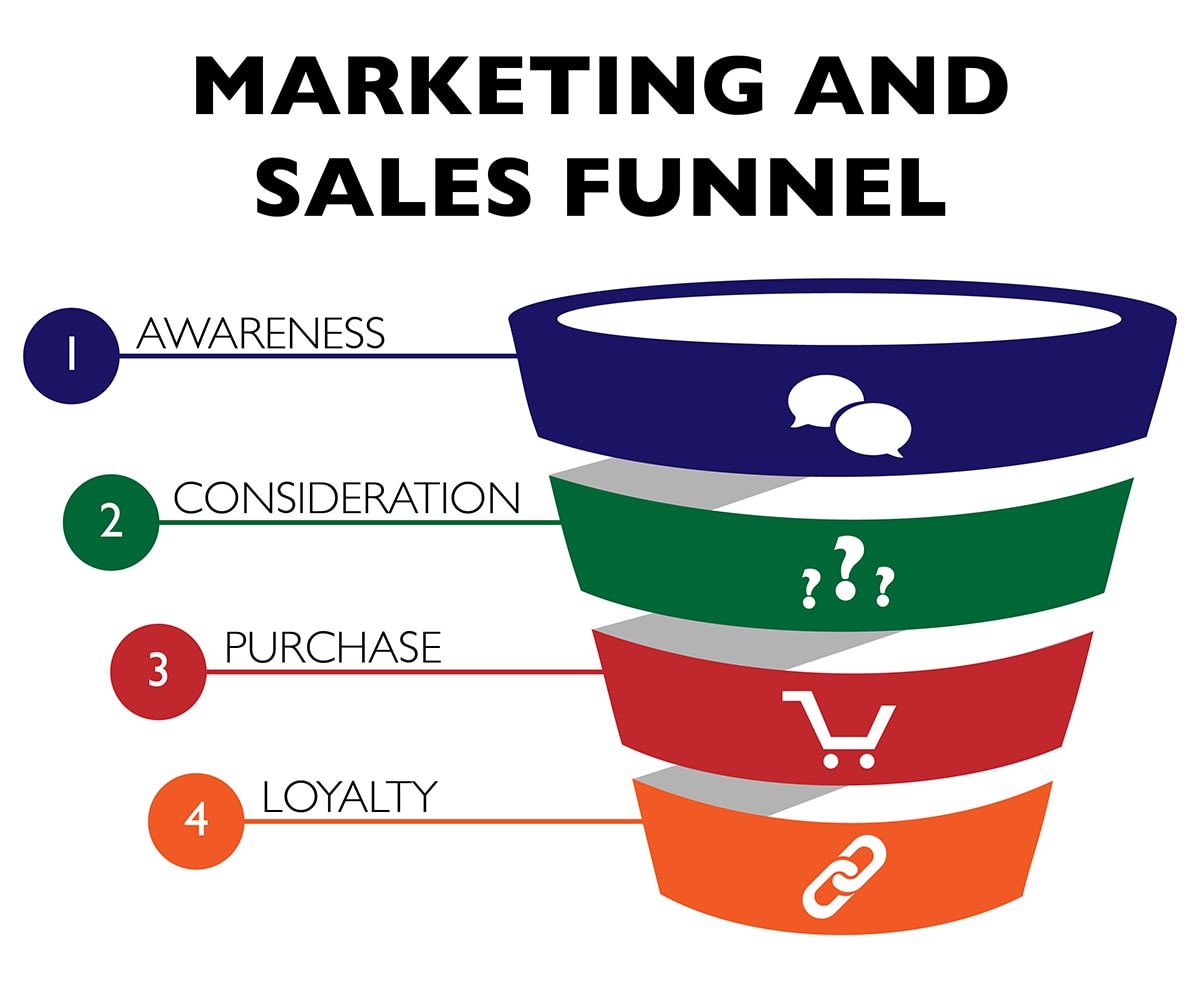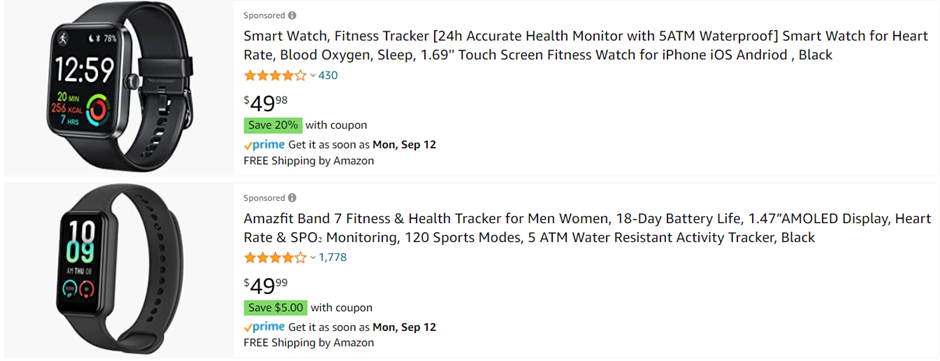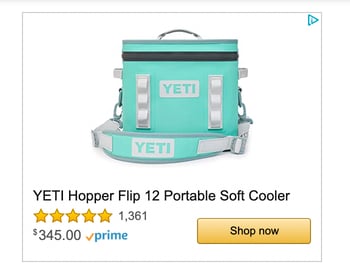Originally published on March 28, 2023, updated March 19, 2025
Menu
Join Our Email List
- Receive our monthly newsletter.
- Stay up to date on Amazon policies.
- Get tips to grow your business.
Looking for actionable ways to improve your Amazon ads? Nathan Gault, Associate PPC Manager at eCommerce Nurse, shares eight tips for getting more clicks and conversions.
If you want to grow your sales on Amazon, advertising your products is essential. However, Amazon's Sponsored advertising can be a complex and confusing process, especially if you are new to the space. This can often mean that advertisers on Amazon are making mistakes that could be costing them money and missing out on potential sales.
This article will help ensure you don’t make any of those mistakes and that your Amazon advertising strategy is set up for optimal success.
Here are some helpful tips for improving your Amazon targeted ads.
The first step you want to take when improving the performance of your Amazon targeted ads is ensuring that the listings of your advertised products are "retail ready."
Being retail-ready means that your listing is fully optimized and ready to be advertised.
What does this look like?
A retail-ready listing will also include a short brand story and A+ Content that provides additional information and makes the listing more visually appealing.
To be retail-ready, Amazon recommends having a minimum of 15 reviews and at least a 3.5 star rating.
For example, the product below would not be considered retail ready based on its reviews.

You want to verify that your products are retail-ready before spending any money on advertising them. This means that right from the start, your items have the best chance of bringing in sales when a customer clicks on your ad.
If you are already advertising products that are not retail-ready, then you will want to start using this retail readiness checklist to identify which areas of the listing need improvement. If you have a high ACoS (advertising cost of sale) and a low ROAS (return on ad spend) on a product that you are currently advertising and it's not retail-ready, then you may want to pull back on ad spend for that ASIN until you have taken the necessary steps to fully optimize it and help it reach its full potential.


Selling on Amazon is incredibly competitive. Subsequently, there is high competition for ad space. Knowing your category and your competitors will help you better understand what you need to do to outperform the competition and grow your brand on Amazon through advertising.
Knowing this information will also give you more guidance on what size of budget you will need, as some Amazon categories are more competitive than others. Researching the main competitors for your product will help you pinpoint what brands you will want to target to have your ads displayed to more people.
Knowing what you want to achieve on Amazon and how you want to use advertising to help you do it is going to help you create and manage your ads better. This is because you know what you are working towards and what optimizations you need to make to achieve the targets that you've set.
The targets that you want to be thinking about are what sales you want to achieve on Amazon, what return you want to get from your ad spend, and your overall profitability.
For example, if you have a monthly ads budget of $5,000 and you want to make four times your ad spend in ad sales or a 25% ACoS, then you know that you are working towards $20,000 monthly ad sales and you can make changes to your campaigns accordingly to meet this target.
If you don’t have any targets in mind such as sales or a ROAS/ACoS target, then you won’t ever know if you can be fully satisfied with the performance of your ad campaigns.
Keyword research will play a crucial role in improving your Amazon advertising performance. The keywords that you enter when setting up a new campaign are what your ads will appear for when customers search for them on Amazon, so it’s important that you get this right.
If you have a lot of keywords that aren’t relevant to your product or if you have a lot of niche keywords that have a low search volume, then your ads aren’t going to get many clicks.
Performing extensive keyword research prior to setting up your ad campaigns will help ensure that this isn't the case. Good keyword research means you'll be targeting the right type of customer who is looking for exactly what you’re advertising.
Related reading: How to Find Profitable Products to Sell on Amazon
Keyword research tools provide data on keyword terms and phrases to help you pick out the best ones for your products.
Another method of identifying high-performing keywords is to run an automatic campaign before setting up a manual one. An automatic campaign means that Amazon’s algorithm will target keywords and products that are relevant to the products you’re advertising. This will help you generate sales data on keywords and ASIN targets so you can see what you should add to your manual campaign.
 For optimal advertising targeted ads, you will want to make sure your ad campaigns have enough money for what you want to achieve. You will need to have a strong enough budget to ensure your ad campaigns are running throughout the entire day. If you don’t have enough to fund the campaign, then it will stop running and won’t become active again until the following day.
For optimal advertising targeted ads, you will want to make sure your ad campaigns have enough money for what you want to achieve. You will need to have a strong enough budget to ensure your ad campaigns are running throughout the entire day. If you don’t have enough to fund the campaign, then it will stop running and won’t become active again until the following day.
For example, if you are targeting a highly searched keyword that has a high cost per click (i.e. $2) and your daily budget for that campaign is only $10, then after that one keyword gets five clicks the entire campaign will be out of budget for the rest of the day. And since it's such a popular keyword, it is likely that it won’t take very long to get those clicks. Now you're out of money and have plenty of missed sales opportunities to boot.
Something you can do to help your budget last longer is to use the campaign bidding strategy when setting up your ad campaign. Selecting "Dynamic bids-down only" instructs Amazon to lower your bids when ads may be less likely to convert.
Another new feature that's recently been released is Amazon Marketing Stream. This provides hourly, real-time data that tells you what times of the day your ads perform better so you can adjust your budget accordingly.
Sponsored Product, Brand, Brand Video, and Display ads all offer different features that the others don’t. Each ad type also allows advertisers to target customers at different stages of the sales funnel, which is shown below.


 Sponsored Display ads will help you target customers who are more "upper funnel" which means they are less likely to be aware of your brand. Display ads are really good at raising this awareness and starting someone on the journey to purchasing from you. Sponsored Display is the only ad type that allows you to advertise your Amazon listing off Amazon as well as on it, so it’s definitely something you should be considering.
Sponsored Display ads will help you target customers who are more "upper funnel" which means they are less likely to be aware of your brand. Display ads are really good at raising this awareness and starting someone on the journey to purchasing from you. Sponsored Display is the only ad type that allows you to advertise your Amazon listing off Amazon as well as on it, so it’s definitely something you should be considering.Amazon is always adding new features to its advertising platform, which you can use to improve your ads and make them better for the customer.
For Sponsored Brand ads, you want to ensure that you have a brand store set up and that you are running all Sponsored Brand campaigns to your storefront rather than to a separate landing page. This will help showcase your brand and its entire range of products to the customer. You should also be taking advantage of the custom lifestyle feature which allows you to use a lifestyle image for the products you're advertising.
For Sponsored Brand Videos, it's vital that you're following Amazon's video guidelines so your campaign will be approved. A video should last about 30 seconds and only feature the product that the video leads to. If you have a low budget and little knowledge of video creation, you can use Amazon’s Video Creative Builder templates.
Lastly, for Sponsored Display ads, you should consider both contextual targeting (targeting certain products and categories with ads) and audience targeting (remarketing to people who viewed your listings or competitor’s listings and targeting people based on lifestyle, interests, and life events). You may not have the budget to do all of these, but you should at least be aware of them and how they target customers.
A big mistake that many brands make with their Amazon targeted ads is falling into the "set it and forget it" mindset. This means they will spend time and money creating their ad campaigns but leave them to run without checking or working on them again. This is a surefire way to fail with Amazon advertising.
Ad campaigns require ongoing monitoring and optimization as Amazon is an ever-changing and highly competitive landscape. In every category, there are many brands that are all vying for top spots in search results to get a customer’s attention.
As a result, you need to be constantly checking your ad campaign’s performance to ensure you are remaining competitive while making a return on your ad spend that you are happy with. You should monitor the performance of each campaign and the keywords and/or ASIN targets within each one to verify that your bids are high enough to be competitive. You also may need to switch off any keywords that are not performing well to help you achieve your advertising targets.
There are numerous ways you can improve the performance of your Amazon targeted ads. If you aren’t currently doing any of the actions outlined above, then you need to think about how you could implement any one of these in your advertising strategy moving forward.
If you need more guidance, reach out to eCommerce Nurse for help!
Originally published on March 28, 2023, updated March 19, 2025
This post is accurate as of the date of publication. Some features and information may have changed due to product updates or Amazon policy changes.
These Stories on Advertising
14321 Winter Breeze Drive
Suite 121 Midlothian, VA 23113
Call us: 800-757-6840





Copyright© 2007-2025 eComEngine, LLC. All Rights Reserved. eComEngine®, FeedbackFive®, RestockPro®, and SellerPulse® are trademarks or registered trademarks of eComEngine, LLC. Amazon's trademark is used under license from Amazon.com, Inc. or its affiliates.
No Comments Yet
Let us know what you think